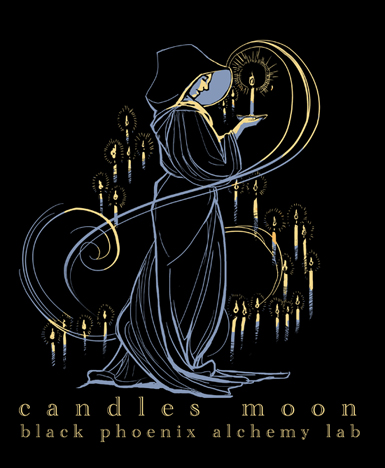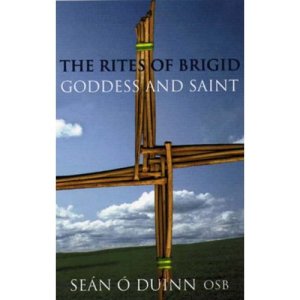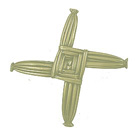To explore the colour symbolism of a deity, we must put aside a few modern biases and assumptions. I have had the opinion expressed to me before that the colours of Bride, described as her white skin and golden hair are superficial and unimportant. I can understand this from a modern perspective, where we associate such things with vanity or even racism, but I do believe that anything important enough to be preserved in lore and prayers for centuries is worth looking at and likely to be significant on a symbolic level.
Bríde, being a Goddess primarily associated with fire is often linked in modern thought to the colour Red. In fact many modern artists give her Red hair too, which is further linked to her Irish dominion. However this is something I’ve begun to question in my studies and work with her. To begin with, is red really the colour of fire? It is only one of the colours in fact, with shades of gold, blue, purple and white also present in flames. In fact the hottest flames are white. I do wonder if our idea that red is the primary colour of fire could be a fairly modern one, and the ancestors may have considered yellow/gold or white to be it’s true colour.
The reason I consider this, is because of the little recorded lore we have of Bríde, albiet after her assimilation with the saint of the same name, she is linked with the colours Gold and White repeatedly.
Carmina Gadelica Vol 3. Page 365 Night Shielding Verse “And Brigit, the fair and tender, Her hue like cotton-grass, Rich-tressed maiden, Of ringlets of gold.”
The above phrase appears again in a House Blessing chant in The Sun Dances Prayers and Blessings from the Gaelic, Alexander Carmichael, which I have previously posted on this blog.
Carmina Gadelica Vol 1. Page 277 Herding Blessing
“And of the milkmaid of the soft palms,
Bride of the clustering hair golden brown,
And of the milkmaid of the soft palms,
Bride of the clustering hair golden brown.”
In less scholarly sources, Bride is described as having golden-brown hair in The Coming of Angus and Bride (1917) by Donald Alexander MacKenzie, and as having long golden hair in Abbie Farwell Brown’s The Book of Saints and Friendly Beasts (1900)
Additionally, the flower for which we have the most evidence of connection to Bríde is the Dandelion, which turns from gold to white. The foods given to Bríde include milk (white) and butter (gold) due to her connections with cattle and the dairy. In the sources we have describing the Brideog it is often dressed in white cloth, and the reeds woven in to the cros Bride are golden when dried. The more one looks, the more connections one finds between these colours and the Goddess/Saint.
Conversely, I have found no great connections in the lore between Bride and the colour red. The only one that has been pointed out to me is the Oystercatcher, Bride’s bird, which is Black, White and Red in colour.
Of other interest is the colour of Bride’s mantle, which I have yet to find any description of in lore, other than being ‘bright.’ John Duncan paints it white, but it is also often represented as blue or green, both in modern Pagan and Christian iconic art. This article is a fascinating exploration of the possible colours of Bride’s mantle.
Why is this of any significance? Because it allows us to evaluate other connections and associations to Bride in a different light. One might be more inclined to research the connection between Bride and a certain tree, flower or animal if it reflected the colours associated with her. Likewise one can meditate on the symbolism of these colours to uncover further mysteries of Bride, our bright lady of the white palms and golden hair.




